Awesome job wrapping up Part 1 of the Energy Merit Badge! You’ve learned how to save energy, understand energy resources, and even identify ways to reduce waste in your school and community. Now that you’ve mastered the basics, it’s time to take a deeper dive into the larger world of energy in Part 2.
In this part, we’re going to explore how energy flows on a much bigger scale. We’ll start by looking at the energy resources that power the United States and the world. Through pie charts, you’ll uncover some interesting insights about where our energy comes from, how much of it we import, and how different sectors like homes, businesses, and transportation use it. Understanding these trends will help you see why it’s so important to shift towards more sustainable sources of energy.
But that’s not all — we’ll also take a closer look at some exciting energy systems that are helping us create more usable, clean energy. From solar power to geothermal plants, you’ll learn about the technologies that are making a real difference, as well as the challenges and benefits they bring. And to top it off, we’ll explore some amazing career opportunities in the energy field. Maybe one day, you’ll be the one designing the next big innovation in clean energy!
So, let’s dive into Part 2 and uncover how energy systems work on a global scale, what’s being done to improve them, and how you can be part of the future of energy!
Energy Merit Badge Requirements
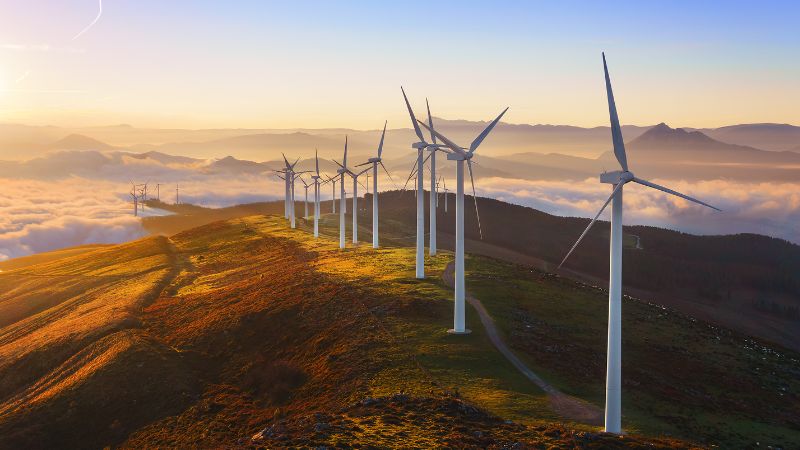
| 1. Do the following: (a) With your parent’s permission, use the internet to find a blog, podcast, website, or an article on the use or conservation of energy. Discuss with your counselor what details in the article were interesting to you, the questions it raises, and what ideas it addresses that you do not understand. (b) After you have completed requirements 2 through 8, revisit your source for requirement 1a. Explain to your counselor what you have learned in completing the requirements that helps you better understand the article. |
| 2. Show you understand energy forms and conversions by doing the following: (a) Explain how THREE of the following devices use energy, and explain their energy conversions: toaster, greenhouse, lightbulb, bow drill, cell phone, nuclear reactor, sweat lodge. (b) Construct a system that makes at least two energy conversions and explain this to your counselor. |
| 3. Show you understand energy efficiency by explaining to your counselor a common example of a situation where energy moves through a system to produce a useful result. Do the following: (a) Identify the parts of the system that are affected by the energy movement. (b) Name the system’s primary source of energy. (c) Identify the useful outcomes of the system. (d) Identify the energy losses of the system. |
| 4. Conduct an energy audit of your home. Keep a 14 day log that records what you and your family did to reduce energy use. Include the following in your report and, after the 14-day period, discuss what you have learned with your counselor. (a) List the types of energy used in your home such as electricity, wood, oil, liquid petroleum, and natural gas, and tell how each is delivered and measured, and the current cost; OR record the transportation fuel used, miles driven, miles per gallon, and trips using your family car or another vehicle. (b) Describe ways you and your family can use energy resources more wisely. In preparing your discussion, consider the energy required for the things you do and use on a daily basis (cooking, showering, using lights, driving, watching TV, using the computer). Explain what is meant by sustainable energy sources. Explain how you can change your energy use through reuse and recycling. |
| 5. In a notebook, identify and describe five examples of energy waste in your school or community. Suggest in each case possible ways to reduce this waste. Describe the idea of trade-offs in energy use. In your response, do the following: (a) Explain how the changes you suggest would lower costs, reduce pollution, or otherwise improve your community. (b) Explain what changes to routines, habits, or convenience are necessary to reduce energy waste. Tell why people might resist the changes you suggest. |
| 6. Prepare pie charts showing the following information, and explain to your counselor the important ideas each chart reveals. Tell where you got your information. Explain how cost affects the use of a nonrenewable energy resource and makes alternatives practical. (a) The energy resources that supply the United States with most of its energy. (b) The share of energy resources used by the United States that comes from other countries. (c) The proportion of energy resources used by homes, businesses, industry, and transportation. (d) The fuels used to generate America’s electricity. (e) The world’s known and estimated primary energy resource reserves. |
| 7. Tell what is being done to make FIVE of the following energy systems produce more usable energy. In your explanation, describe the technology, cost, environmental impacts, and safety concerns. – Biomass digesters or waste-to-energy plants – Cogeneration plants – Fossil fuel power plants – Fuel cells – Geothermal power plants – Nuclear power plants – Solar power systems – Tidal energy, wave energy, or ocean thermal energy conversion devices – Wind turbines |
| 8. Find out what opportunities are available for a career in energy. Choose one position that interests you and describe the education and training required. |
Understanding Energy Use Through Visuals and Insights
Energy plays a vital role in our daily lives, fueling transportation, powering homes, and driving industry. Below, I’ll present pie charts for each category, explain their significance, and provide insights into how costs influence energy choices. The information is derived from the United States Energy & Employment Report 2024 and global energy data.
1. What Supplies Most of America’s Energy?
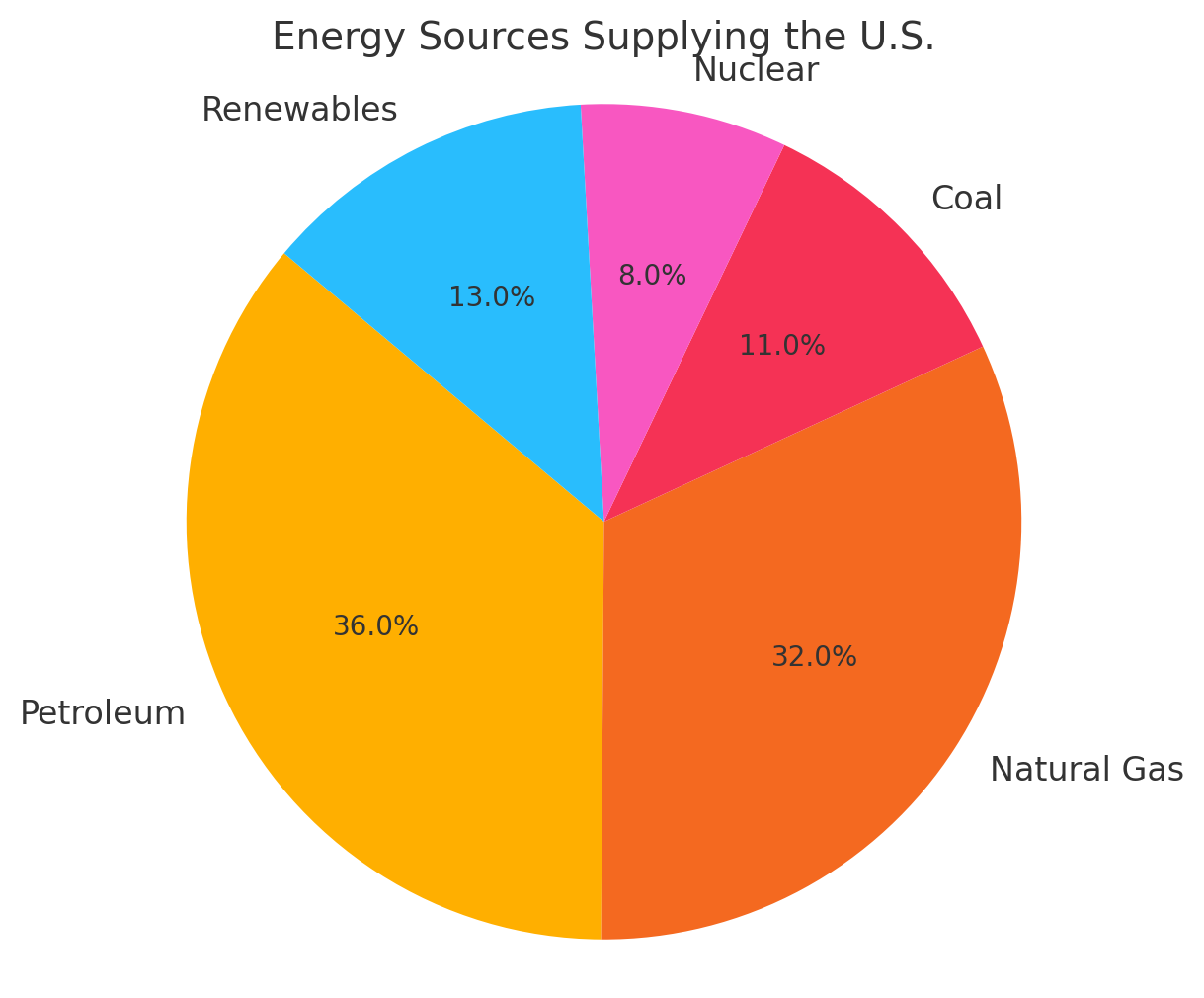
The U.S. energy supply comes from a mix of sources. Here’s how they stack up:
| Energy Source | Percentage |
|---|---|
| Petroleum | 36% |
| Natural Gas | 32% |
| Coal | 11% |
| Nuclear Power | 8% |
| Renewables (solar, wind, hydro, biomass) | 13% |
Fossil fuels dominate the U.S. energy landscape due to their established infrastructure and availability. Renewables are growing rapidly, driven by falling costs and environmental concerns.
2. How Much Energy Does the U.S. Import?
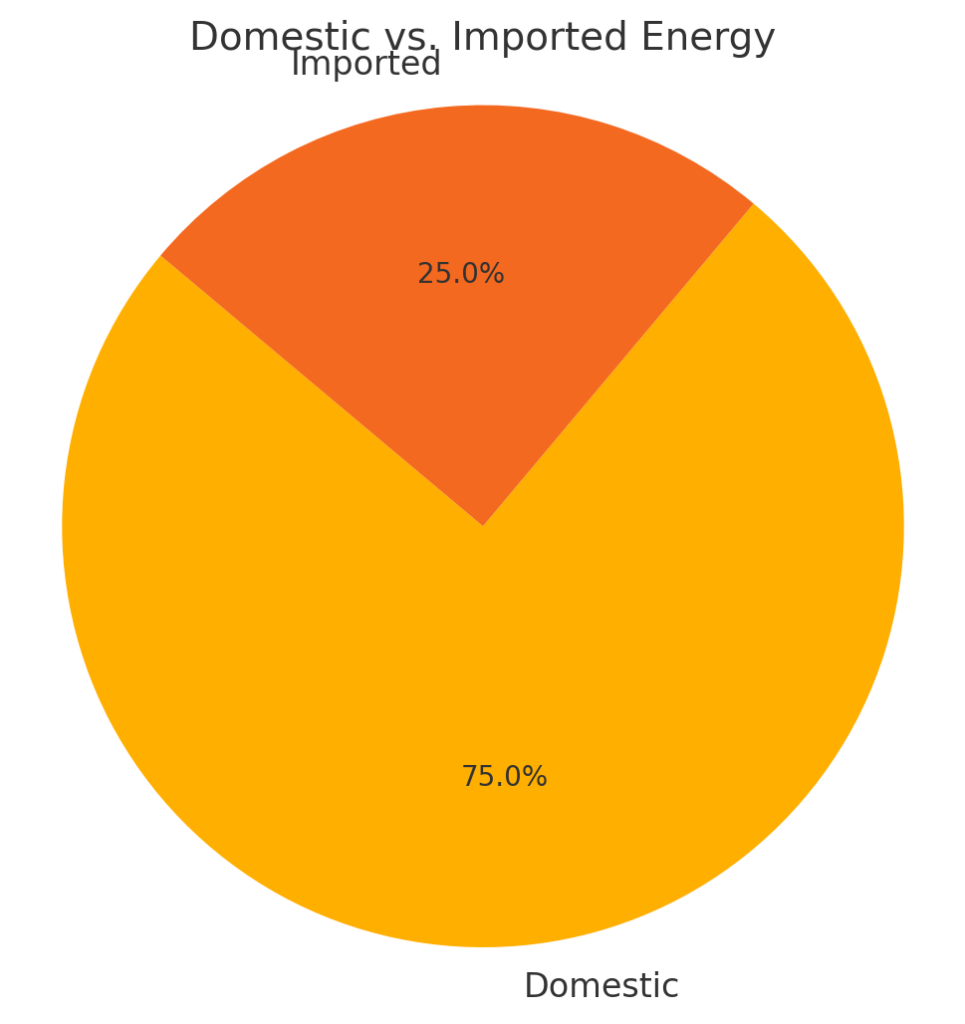
The U.S. imports approximately 25% of its energy. Here’s the breakdown:
| Energy Source | Origin | Share |
|---|---|---|
| Domestic | U.S. production | 75% |
| Imported | Foreign sources | 25% |
While the U.S. produces most of its energy, reliance on imports (primarily oil) underscores the need for energy security and diversification. Increasing domestic renewable production could help reduce import dependency.
3. Who Uses the Energy?
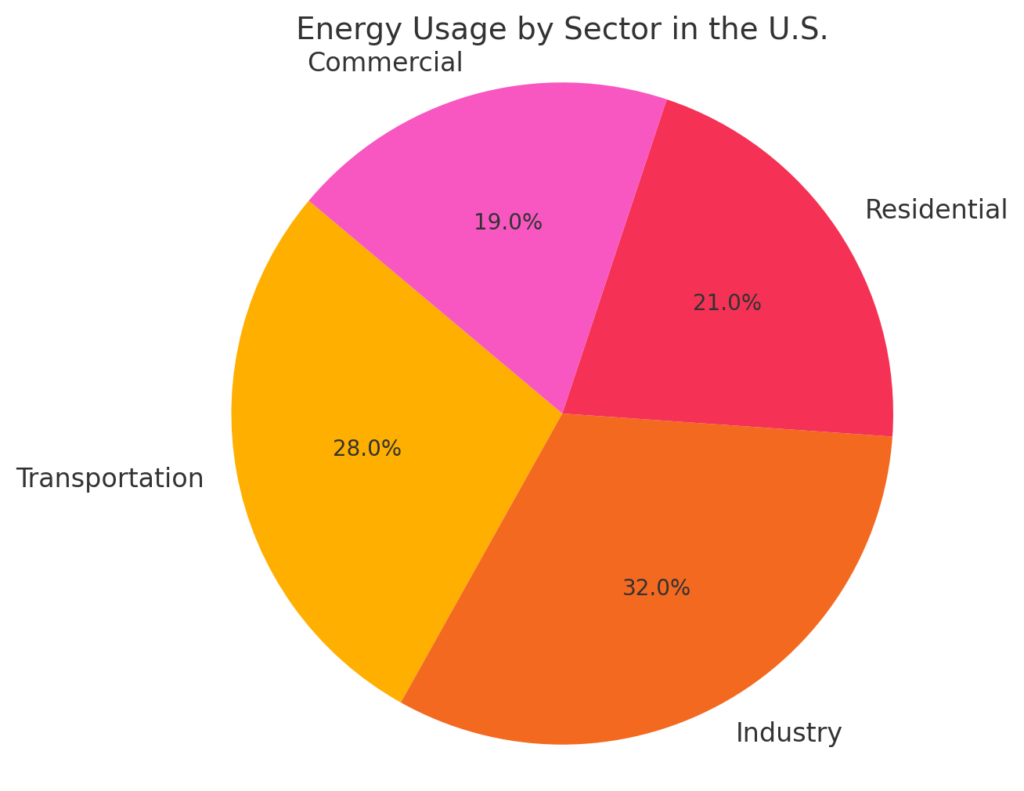
Energy consumption is spread across four main sectors:
| Sector | Percentage |
|---|---|
| Transportation | 28% |
| Industry | 32% |
| Residential | 21% |
| Commercial | 19% |
Industry and transportation are the largest energy consumers. This highlights the importance of making vehicles more efficient and industries greener through sustainable practices and technologies.
4. How Does the U.S. Generate Electricity?
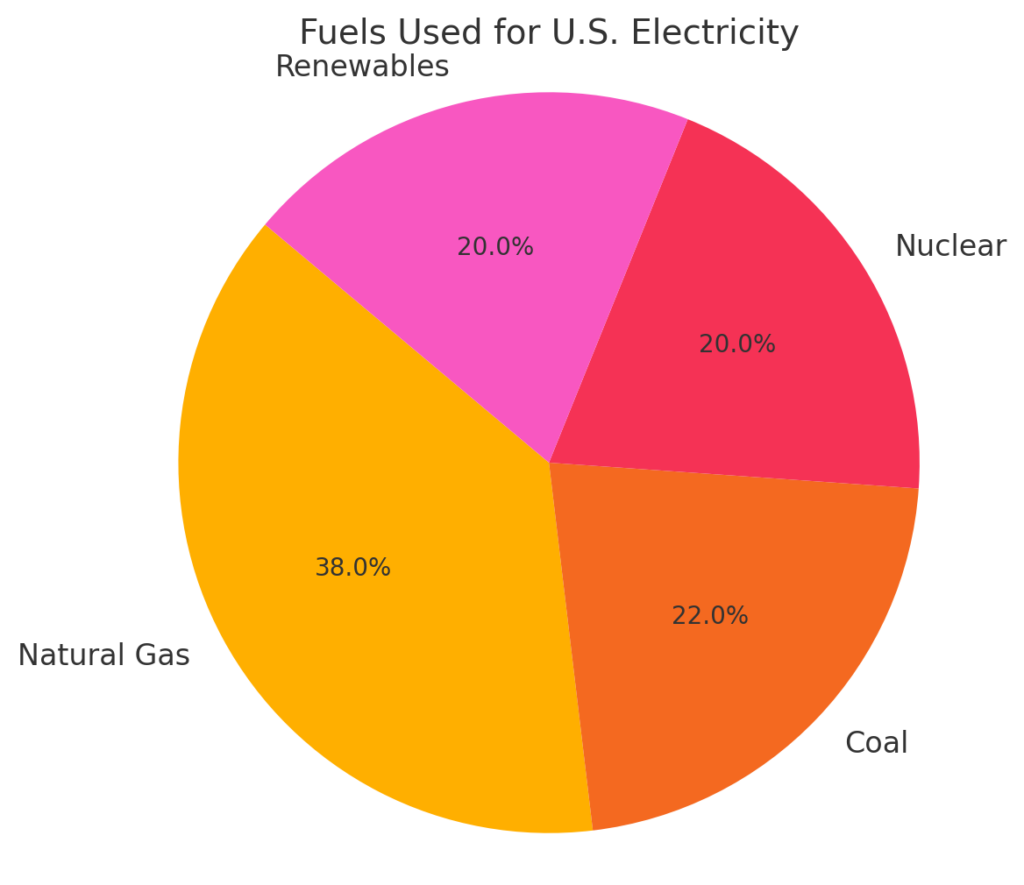
Electricity generation in the U.S. relies on several sources:
| Fuel Type | Percentage |
|---|---|
| Natural Gas | 38% |
| Coal | 22% |
| Nuclear | 20% |
| Renewables | 20% |
Natural gas has overtaken coal as the leading electricity source due to its affordability and lower emissions. Renewables like solar and wind are gaining ground as costs fall and technology improves.
5. What Are the World’s Energy Reserves?
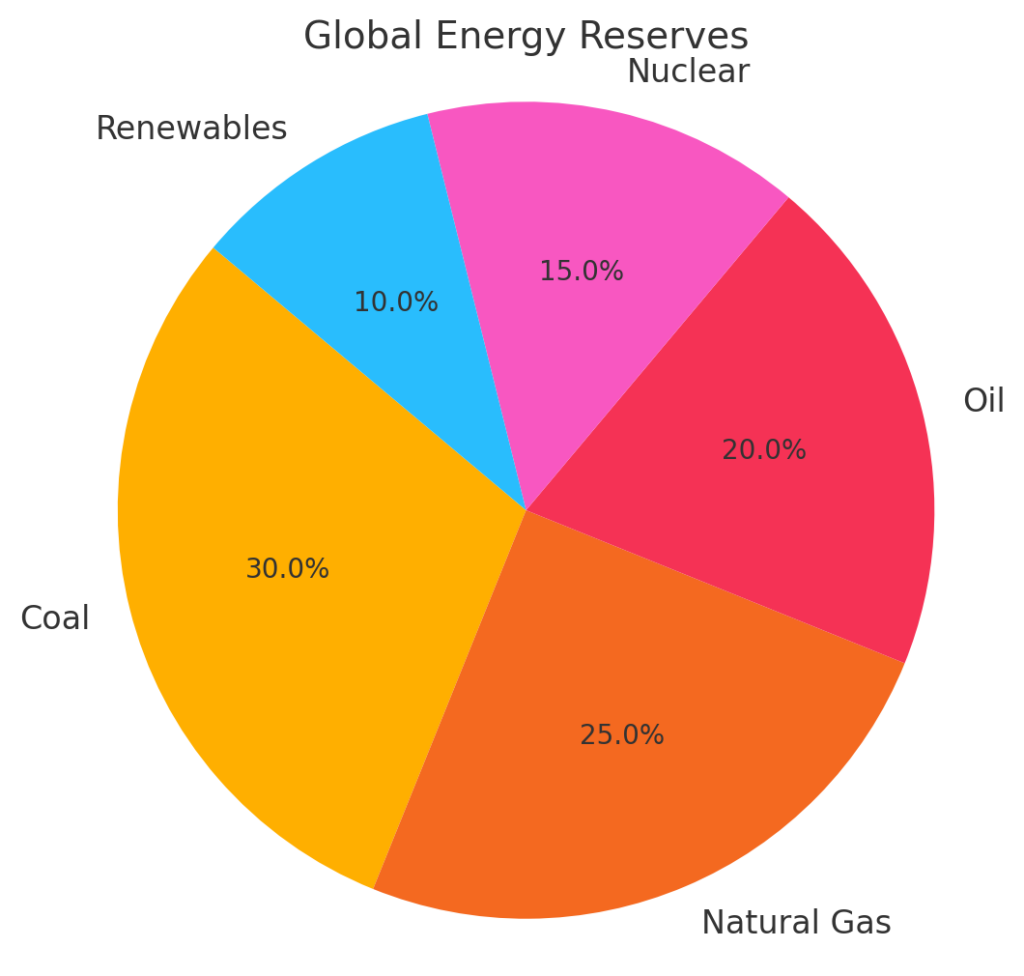
Here’s a look at global energy reserves:
| Resource | Reserve Share |
|---|---|
| Coal | 30% |
| Natural Gas | 25% |
| Oil | 20% |
| Nuclear (Uranium) | 15% |
| Renewables | 10% |
While fossil fuels dominate global reserves, they are finite. Renewables are essentially limitless but require significant technological advancements for effective utilization.
How Costs Shape Energy Use
The cost of energy significantly influences the choices we make:
- Fossil Fuels: Historically low-cost, but rising extraction costs and environmental regulations are making them less appealing.
- Renewables: Costs for wind and solar energy have dropped dramatically (over 80% in the last decade), making them competitive with fossil fuels.
- Nuclear: While offering low emissions, high upfront costs and safety concerns limit its expansion.
As renewable costs decrease and policies encourage clean energy, alternatives to nonrenewable resources become more practical. This shift reduces reliance on finite resources, ensures sustainability, and mitigates climate change.
Enhancing Energy Systems
Energy systems have evolved significantly as we seek to make them more efficient, affordable, and sustainable. Below, I’ll explain what is being done to improve five energy systems, touching on their technology, costs, environmental impacts, and safety concerns.
1. Biomass Digesters and Waste-to-Energy Plants
What They Are:
These systems convert organic waste (like food scraps or agricultural waste) into usable energy. Biomass digesters use anaerobic digestion to produce biogas, while waste-to-energy plants burn trash to generate electricity.
Technological Improvements:
- Advanced Anaerobic Digestion: Modern digesters maximize methane capture, which can be used as a clean-burning fuel.
- Plasma Gasification: Converts waste into synthetic gas with minimal emissions.
- Carbon Capture Integration: Some plants add technology to capture and store CO₂.
Costs:
- Upfront costs are moderate to high (around $1 million for small digesters) but offset by reduced waste management costs and the sale of energy or fertilizer byproducts.
Environmental Impact:
- Positive: Reduces landfill waste and methane emissions, turning garbage into a resource.
- Concerns: Air pollution from waste-to-energy incineration needs to be carefully managed.
Safety Concerns:
- Digesters must prevent methane leaks, which are flammable and harmful if not controlled.
2. Cogeneration Plants
What They Are:
Cogeneration, or combined heat and power (CHP), produces electricity and captures the heat that would otherwise be wasted to provide heating or cooling.
Technological Improvements:
- Micro-CHP Systems: Scaled-down units for smaller buildings or homes.
- Hybrid Systems: Integration of CHP with renewable energy sources for cleaner outputs.
- Digital Optimization: Smart sensors and AI improve efficiency.
Costs:
- Installation costs vary by scale but can range from $500,000 for small systems to millions for large plants. However, operational savings on energy bills make them cost-effective over time.
Environmental Impact:
- Positive: Increases energy efficiency up to 80%, reducing emissions compared to separate systems.
- Concerns: Still relies on fossil fuels in many cases, though cleaner technologies are emerging.
Safety Concerns:
- Proper ventilation and maintenance are essential to prevent heat and gas-related accidents.
3. Geothermal Power Plants
What They Are:
These plants tap into Earth’s natural heat to generate electricity or provide direct heating.
Technological Improvements:
- Enhanced Geothermal Systems (EGS): Drill deeper to access heat in previously untapped locations.
- Binary Cycle Plants: Use low-temperature geothermal resources with improved efficiency.
- Drilling Technology: Innovations like laser drilling reduce costs and environmental impact.
Costs:
- High upfront costs (up to $10 million per well) but low operational expenses. Costs are falling as drilling and extraction technologies improve.
Environmental Impact:
- Positive: Emits little to no greenhouse gases and uses a renewable resource.
- Concerns: Can release small amounts of harmful gases (like sulfur dioxide) and affect groundwater if poorly managed.
Safety Concerns:
- Risks include induced seismic activity (minor earthquakes) and potential well blowouts if pressure is not carefully controlled.
4. Nuclear Power Plants
What They Are:
Nuclear plants generate energy by splitting uranium atoms in a process called fission.
Technological Improvements:
- Small Modular Reactors (SMRs): Compact and safer nuclear designs with lower upfront costs.
- Generation IV Reactors: Advanced designs that improve efficiency and minimize waste.
- Nuclear Fusion Research: Promises limitless energy with minimal waste, though it’s still in development.
Costs:
- Initial costs are extremely high (up to $10 billion per plant), but nuclear energy has low operational costs and produces large amounts of electricity.
Environmental Impact:
- Positive: No greenhouse gas emissions during operation.
- Concerns: Long-lived radioactive waste and water use for cooling.
Safety Concerns:
- While modern plants are much safer, accidents like Chernobyl and Fukushima highlight the need for strict safety measures. Advances like passive safety systems reduce risks.
5. Wind Turbines
What They Are:
Wind turbines capture wind energy to produce electricity.
Technological Improvements:
- Taller Turbines: Reach stronger winds at higher altitudes.
- Floating Wind Farms: Can be deployed in deeper offshore areas with steadier winds.
- Advanced Materials: Lighter, stronger turbine blades increase efficiency and durability.
Costs:
- Turbine installation costs are dropping, with offshore projects costing around $3 million per MW. Maintenance costs are relatively low, and wind is free.
Environmental Impact:
- Positive: No emissions during operation and minimal land use.
- Concerns: Impacts on bird populations and noise pollution.
Safety Concerns:
- Turbines need to withstand extreme weather conditions. Proper design and monitoring are critical to prevent structural failures.
Exploring Careers in Energy
The energy sector offers a wide range of exciting career opportunities for people with diverse skills and interests. Whether you’re passionate about science, engineering, policy, or hands-on work, there’s likely a role in energy that matches your strengths.
Below, I’ll explore career options in energy and focus on one role: Renewable Energy Engineer—a position that’s both impactful and rewarding.
1. Career Opportunities in Energy
The energy industry is broad, with opportunities in fields like:
- Renewable Energy: Careers in solar, wind, geothermal, and hydropower technologies.
- Energy Efficiency: Positions focused on optimizing building systems or designing efficient appliances.
- Traditional Energy: Roles in oil, gas, and coal, focusing on extraction, refining, and generation.
- Nuclear Energy: Involves plant operation, safety, and advanced nuclear technologies.
- Energy Policy and Management: Focuses on developing policies, managing projects, and ensuring compliance.
- Energy Storage and Grid Management: Careers in battery technology, smart grids, and energy distribution.
- Environmental Science and Sustainability: Working on projects to reduce emissions and improve sustainability.
Why This Role?
Renewable Energy Engineers design and develop systems that harness energy from renewable sources like solar, wind, and geothermal. This role combines technical expertise with a passion for sustainability, making it ideal for those who want to make a tangible difference in the fight against climate change.
2. What Does a Renewable Energy Engineer Do?
Renewable Energy Engineers focus on:
- Designing and developing solar panels, wind turbines, and energy storage systems.
- Improving the efficiency of renewable energy technologies.
- Conducting feasibility studies for new renewable energy projects.
- Collaborating with construction teams to implement designs.
- Monitoring and optimizing system performance after installation.
Key Skills:
- Strong analytical and problem-solving abilities.
- Proficiency in CAD (Computer-Aided Design) software for modeling systems.
- Knowledge of renewable energy policies and environmental regulations.
3. Education and Training Requirements
- Bachelor’s Degree (Required)
- Fields of study: Mechanical Engineering, Electrical Engineering, Environmental Engineering, or Renewable Energy Engineering.
- Coursework: Thermodynamics, fluid mechanics, energy systems, and environmental science.
- Master’s Degree (Optional, but Beneficial)
- Specialized programs in renewable energy or energy systems engineering.
- Focus on advanced topics like energy storage, grid integration, and policy.
- Certifications (Recommended)
- LEED Accreditation: For expertise in sustainable building design.
- Certified Energy Manager (CEM): Demonstrates proficiency in energy efficiency and management.
- Specialized certifications in solar and wind energy design.
4. Training and Experience
- Internships: Many companies offer hands-on training for students. Interning with renewable energy firms provides valuable real-world experience.
- Apprenticeships: Programs with wind turbine or solar panel manufacturers offer practical skills.
- On-the-Job Training: Entry-level roles in energy firms provide opportunities to grow within the company.
5. Job Outlook and Salary
- Demand: The renewable energy sector is growing rapidly due to global efforts to reduce carbon emissions.
- Salary: Entry-level engineers earn around $70,000 annually, with senior engineers earning $100,000 or more.
- Growth Potential: Opportunities for advancement into project management, consulting, or research.
Conclusion
Once you’ve worked through these energy topics and explored the exciting world of careers, take some time to discuss everything with your counselor. Understanding how energy shapes our world and seeing the role you can play in its future is a big step! From renewable energy systems to the innovations in making our homes more efficient, you’ve gained valuable knowledge to take into your everyday life.
The energy industry is constantly evolving, and you’re now equipped with the tools to ask the right questions, dive deeper, and maybe even spark your own ideas. Keep learning, stay curious, and remember—energy powers everything we do, so the more you understand it, the more you can make a difference! 😊







